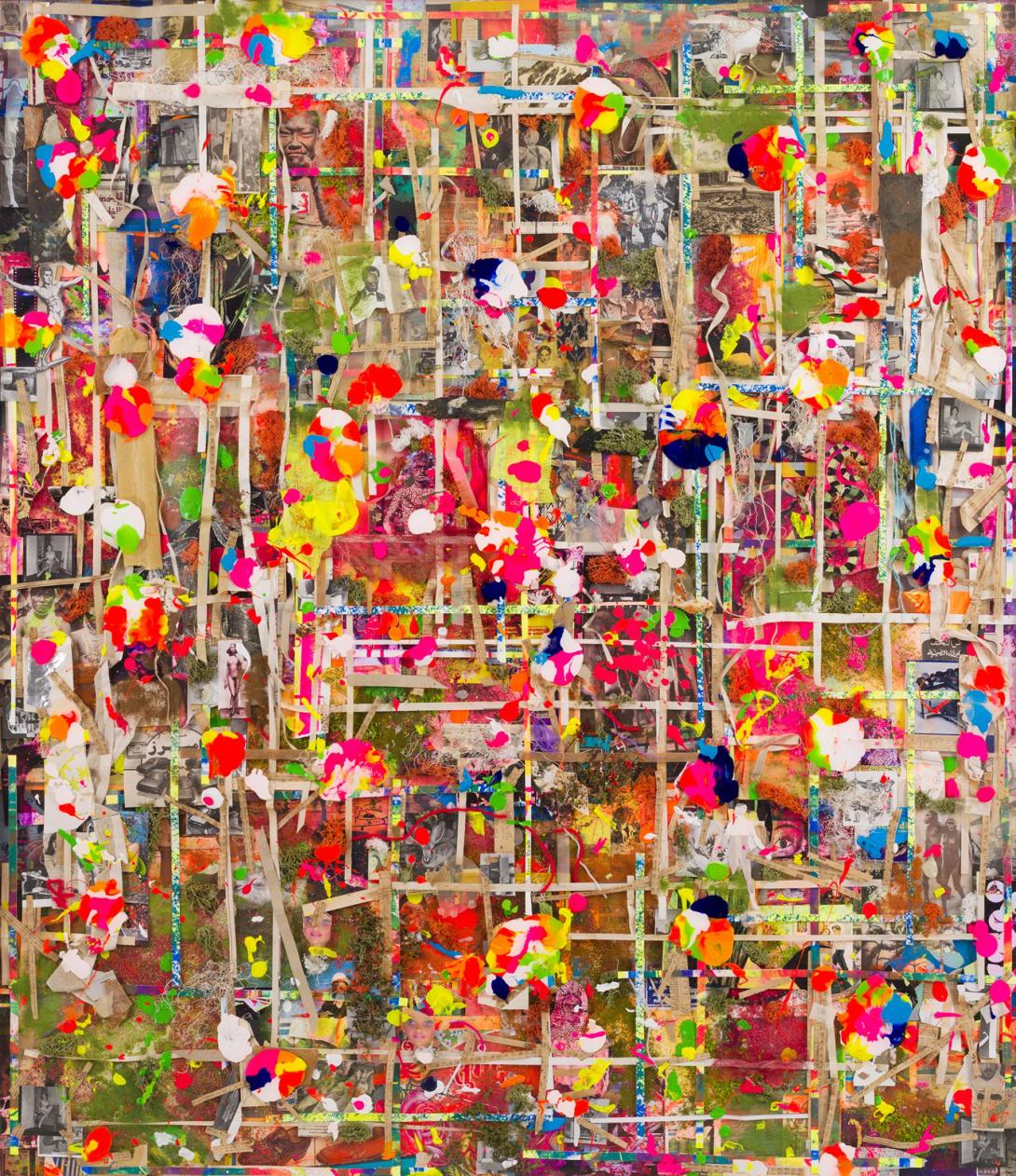Shinro Ohtake
APT9
Born 1955 Tokyo, Japan
Lives and works in Uwajima, Japan
Shinro Ohtake lived in London in the late 1970s at the height of the punk scene. He returned to Tokyo to form the pioneering noise outfit Juke/19 and embarked on a series of exhibitions that helped catalyse the contemporary art scene then emerging in the Japanese capital. One of the most influential figures in Japanese contemporary art, Ohtake intensified the cut-up aesthetic of London punk to a level of sensory overload. Collage, assemblage, oil painting, and a seemingly endless progression of dense, voluminous scrapbooks represent some of the aspects of his practice. Ohtake has also produced a succession of highly engaging installations, which the artist describes as self-portraits, that unify the various threads of his practice.

Shinro Ohtake / Japan b.1955 / Oku-Kei 13 2017 / Oil, acrylic, ink, coloured ink, colour powder, printed matter, photograph, ink-jet print, silk screen print, hemp cloth, cotton cloth, synthetic leather, cheesecloth, silk thread, cotton yarn, adhesive cellophane tape, packing tape, metal, lead, sponge, lichen, plastic, plastic sheet, balsa wood, packing paper, thin paper, Japanese paper, newspaper, wall paper, and paper in custom frame / 153 x 133 x 9.2cm / © Shinro Ohtake / Image courtesy: The artist and Take Ninagawa, Tokyo
Shinro Ohtake maintains a balance of rebelliousness and refinement in his work, which is based on the acts of cutting and pasting images, testing the viscosity and hue of paint, and recycling discarded objects. His works in APT9 are from two recent series: the abstract works of the ‘Time Memory’ series, begun in 2011, and the more figurative works known as Oku-Kei (literally ‘Memory Scapes’) from 2017–18.
For all the apparent intensity of the surfaces of Ohtake’s works, they are created with great patience, though his process of selection is impulsive and intuitive. The artist methodically creates layers of material inspired by geological strata, striving for a ‘variation of density’, rather than a thematic connection between elements.
Ohtake is also interested in the way that layering images and materials evokes the jumble of urban streetscapes, the passage of time, and the associative quality of memories and dreams. His work is a material-driven investigation into vision and memory, founded on the daily experience of living in a world saturated with images.

Oku-Kei 13 2017
- OHTAKE, Shinro - Creator
